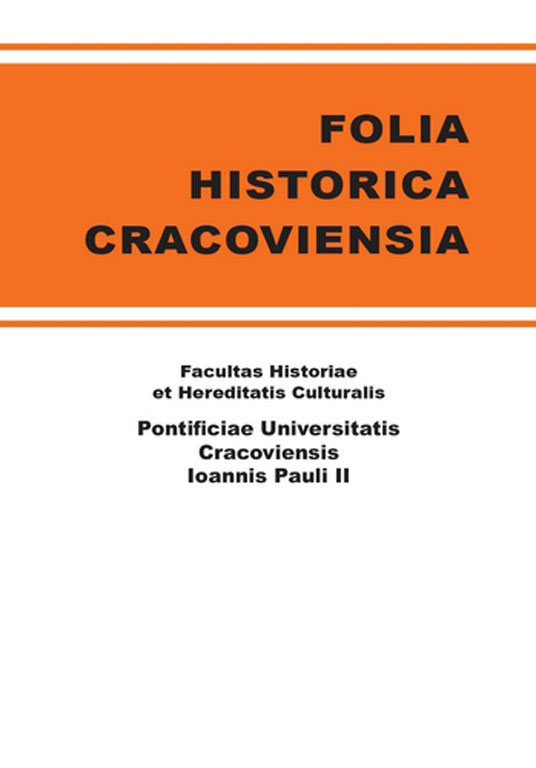Pobożność szlachcianki w świetle polskich drukowanych mów pogrzebowych XVII wieku
DOI:
https://doi.org/10.15633/fhc.221Słowa kluczowe:
pobozność, szlachcianka, mowa pogrzebowa, Polska, 17 wiekAbstrakt
17th century funeral orations, as sources of didactic character, include numerous threads referring to the piety of baroque damsels. They are full of examples describing religiousness of women of virtually all ages and marital statuses (married, single and widowed). According to the model propagated by the clergy, a zealous catholic woman was supposed to be devoted to God and persistent in her belief. She should also worship Mary the Mother of God, Jesus and saint patrons, which was reflected in her participation in religious confraternities. It was also important that she attended religious services and pilgrimages as well as respected fasting periods and received holy sacraments. On every day basis, it was suggested that a God fearing Christian should live by the rules of the Decalogue, read religious books and contemplate the moment of death and prepare to it by reading ars bene moriendi guides. Charity work and generous donations to churches, monasteries, schools and homeless shelters were also important. Preachers also emphasised the personality features of a model catholic woman. Hence it was suggested that she should be hard working, reasonable, quiet and modest. Although clergymen emphasised deep and fervent religiousness of women whom they were describing in their sermons, we are actually unable to fully confirm the accuracy of their words. Therefore, it must be assumed that, on the one hand, this religiousness and piety was supposed to constitute an ideal role model, on the other hand, however, it resulted from the fear which accompanied people almost everywhere in turbulent times of the 17th century.
Pobrania
Opublikowane
Numer
Dział
Licencja
Prawa autorskie (c) 2012 Urszula Kicińska

Praca jest udostępniana na licencji Creative Commons Attribution-NonCommercial-NoDerivatives 3.0 Unported License.
Autorzy publikujący w czasopiśmie udzielają jego wydawcy zgody o następującej treści:
- Autor zachowuje autorskie prawa majątkowe do utworu, a jednocześnie udziela wydawcy czasopisma zgody na jego pierwszą publikację w wersji drukowanej i wersji online na licencji Creative Commons Uznanie autorstwa 4.0 Międzynarodowe oraz zgody na wykonywanie opracowań, w tym przekładów.
- Autor ma możliwość udzielania zgody niewyłącznej na opublikowanie utworu w wersji, która ukazała się w czasopiśmie (np. zamieszczenia go w repozytorium instytucjonalnym lub opublikowania w książce), wraz z informacją o jego pierwszej publikacji w czasopiśmie.
- Autor może umieścić swój utwór online (np. w repozytorium instytucjonalnym lub na swojej stronie internetowej) jeszcze przed zgłoszeniem utworu do czasopisma.

